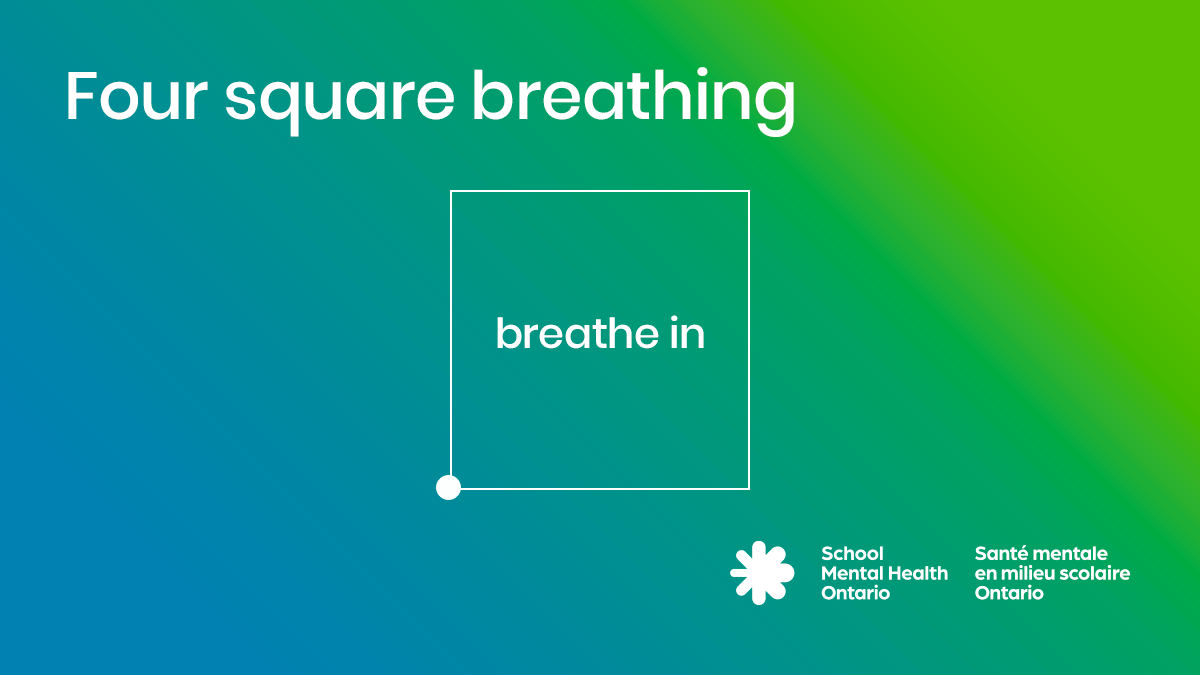


Time
45-60 minutes
Frequency
Monthly
Material
N/A
Purpose
To help students produce a sense of calm and a boost of energy through spending time in fresh air
Acknowledge different ways of understanding and experiencing the significance of nature and healing for different cultural groups and ensure safety in community for all students.
Please make sure to review ‘Considerations’ before beginning this practice.
Introduce the outdoor classroom and explain why this can improve individual mental health and emotional well-being (see “Evidence” section).
- Have a spot in mind to take the class (e.g., a shady tree or a good spot around the property).
- Have students collect and bring belongings needed for class, (e.g., math revision sheets, a book, papers for an essay, etc.).
- Walk to the location and on arrival lead students in a breathing exercise.
- Complete the lesson.
- Before leaving, lead students in a breathing exercise.
- Once back in the classroom, discuss the benefits of the experience with respect to their sense of calm and energy level.
- Complementary practices:
- Four square breathing:

- Mental Health Literacy and Anxiety Management Social Media Bundles: Breathing exercises
- May need seating materials.
- This practice could be experienced as often as possible, as appropriate.
There is a substantial body of evidence that demonstrates the effectiveness of learning in a natural environment. Time outdoors positively impacts cognitive, attitudinal, social and developmental outcomes for people of all ages (Tillmann et al., 2018; Capaldi et al., 2015; Bowler et al., 2010; Blair & Diamond, 2008). Spending time in nature leads to improvements in mental health and emotional regulation for children; furthermore, providing an outdoor learning environment for students helps them to connect with nature and can produce a sense of calm (Tillmann et al., 2018; Capaldi et al., 2015; Bowler et al., 2010). Having spaces or times for calming activities throughout the school day normalizes emotions, allows students to manage emotions so they can refocus and engage in learning, and has been linked to improved student achievement (Blair & Diamond, 2008).
Blair, C., & Diamond, A. (2008). Biological processes in prevention and intervention: The promotion of self-regulation as a means of preventing school failure. Development and Psychopathology, 20(3), 899-911. doi:10.1017/S0954579408000436
Bowler, D. E., Buyung-Ali, L. M., Knight, T. M., & Pullin, A. S. (2010). A systematic review of evidence for the added benefits to health of exposure to natural environments. BMC public health, 10(1), 456.
Capaldi, C. A., Passmore, H.-A., Nisbet, E. K., Zelenski, J. M., & Dopko, R. L. (2015). Flourishing in nature: A review of the benefits of connecting with nature and its application as a wellbeing intervention. International Journal of Wellbeing, 5(4), 1-16. doi:10.5502/ijw.v5i4.449
Tillmann, S., Tobin, D., Avison, W., Gilliland, J., (2018). Mental health benefits of interactions with nature in children and teenagers: A systematic review. Journal of Epidemiology and Community Health, 72(10).
Or, view all practices and use filters to find what you need
